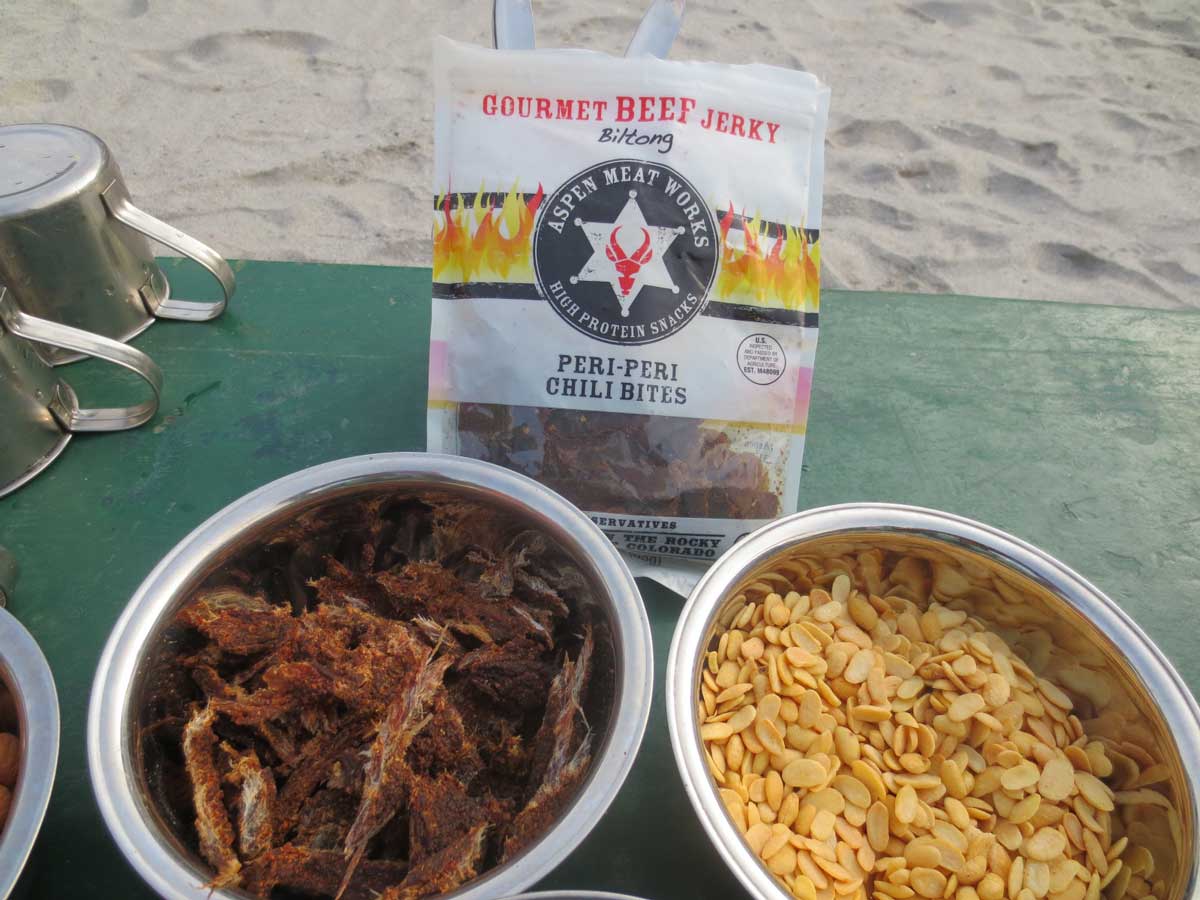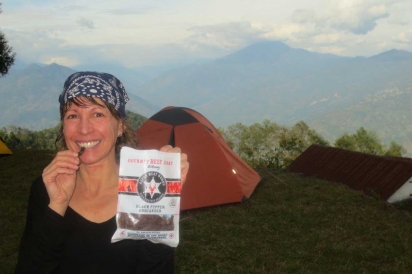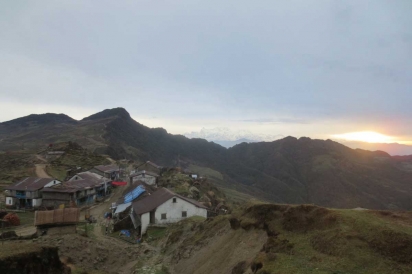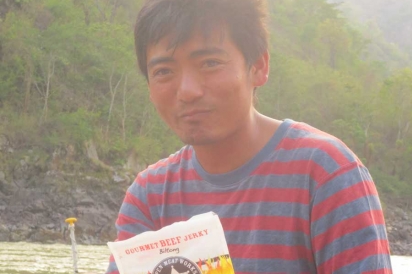Adventuring in Nepal...Aspen Meat Works-Powered
Shortly after Edible Aspen ran my feature on Aspen Meat Works in the Spring issue, I departed for Nepal. While initially conceived as a vacation (if there’s one thing Aspenites can understand, it’s flying to the other side of the world to trek some mountains and run a river), I managed to finagle a feature on Nepalese cheesemaking for culture: the word on cheese.
Since I was doing a four-day trek in the Eastern Himalayan foothills (a 17-hour bus ride from our departure point of Kathmandu), during which we’d walk to our put-in on the extremely remote Tamur River, Christina Kruger and Craig Hart of Aspen Meat Works loaded me up with packages of the biltong to power my trip.
In return, I promised them social media love and feedback from my tripmates (there were three of us clients, our Aussie guide/Whitewater Asia owner Pat O’Keefe and his Nepali support crew, including safety kayakers Krish and Naram and gear boat guide Ganesh). One of the clients, a Brit now living in Burma, had lived in Africa for a number of years, and he knows from biltong (and kept stealing my supply, the sneak).
I rated this pure-protein snack, made from humanely-raised Colorado beef, a solid thumbs-up when I was flagging on days 3 and 4, which consisted of intensely steep, slippery conditions in high humidity. It was a savior after paddling highly technical rapids, and especially after a hellish, six-hour paddle day of flat water with consistent headwinds. I also appreciated that the biltong wasn’t too salty/aka thirst-inducing, and easy to chew (I have TMJ, what can I say?).
Not surprisingly, however, our group found that the best way to enjoy biltong was as a sundowner snack, paired with river-chilled bottles of Tuborg beer. Our last night, as we camped at the confluence of the Tamur and Sun Kosi Rivers, I was shocked when the guides bust out a happy hour snack of air-dried, spiced water buffalo (delish, if a bit dry).
I hadn’t previously offered them any biltong—being a primarily Hindu-Buddhist nation, I didn’t want to inadvertently cause cultural offense, but turns out they ate beef. I excitedly grabbed a bag of the spicy peri-peri biltong (rubbed with South African bird’s eye chile) and conducted a group taste test amongst the crew.
The guys—who were stunned to learn that biltong is a specialty food product in the states (they clutched their chests when I told them what a package costs)—loved the peri-peri version. All in all, I think the biltong experiment was a resounding success, and I was just as surprised to learn that a version of this ubiquitous South African staple exists in Nepal.
This post is dedicated with love to the people of Nepal and my guides (Pat’s partner company, The Last Resort, was destroyed in the earthquake, as were the surrounding villages; to donate, click here.). If you’d like to make a donation to aid relief efforts, here’s how:
A charity was just established by my former client, Mountain Madness, a travel company located in Seattle. One of their guides, Deana Zabaldo, was leading a group of clients to Everest Base Camp when the quake hit. They are all safe, but the families of their Sherpas are homeless and displaced. To donate, click here. The Red Cross, the UN World Food Program and Doctors Without Borders—among many other organizations—are also soliciting donations for the relief effort. Visit the Associated Press for more ways to help.
Got a cross-cultural exchange story about a Roaring Fork Valley/Western Slope food product? Let us know at info@edibleaspen.com.








